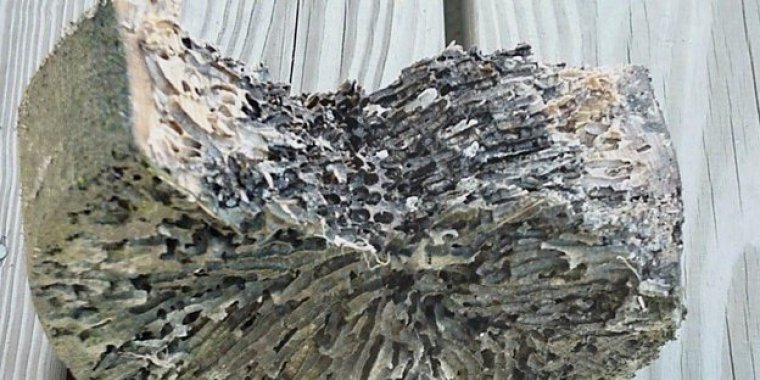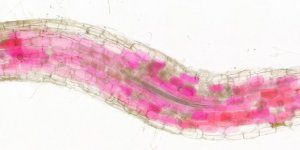| News / Science News |
The 2,000-year-old mystery of a havoc-wreaking worm
Humans have known for more than 2,000 years that shipworms, worm-like mollusks, are responsible for damage to wooden boats, docks, dikes and piers. Yet, research from the University of Massachusetts Amherst, published in Frontiers in Microbiology, reveals that we don't know the most basic thing about them: how they eat.

Section of a piling attacked by shipworms in Belfast, Maine. Photo: Barry Goodell
"It's unbelievable," says Reuben Shipway, a microbiologist at UMass Amherst and one of the paper's authors. "The ancient Greeks wrote about them, Christopher Columbus lost his fleet due to what he called 'the havoc which the worm had wrought,' and, today, shipworms cause billions of dollars of damage a year."
Shipworms also play a key role in mangrove forest ecosystems in the world's tropical regions, and are responsible for cycling a huge amount of carbon through the web of life. "Yet," says Shipway, "we still don't know how they do what they do."
Part of the problem is that the nutritious part of wood -- cellulose -- is encased in a thick and extremely difficult-to-digest layer of lignin. "Imagine a really thick, unbreakable eggshell," says senior author and UMass Amherst microbiologist Barry Goodell.
Certain fungi possess enzymes capable of digesting lignin, and symbiotic bacteria living in shipworms' gills also have these enzymes. "We thought that the bacteria were doing the work," says Goodell, "but we now know that they are not."
Researchers are still trying to figure out what in the shipworm could be responsible for breaking down the lignin. "I combed through the entire genomes of five different species of shipworm," says Stefanos Stravoravdis, the paper's lead author, "looking for specific protein groups that create enzymes capable of digesting lignin. My search turned up nothing."
That, however, is not the end of the story, and the team is conducting more research that will help unravel the mystery.
"The ability of shipworms to use wood as a nutrition source is a complex process," says Joanna Shisler, a program director in NSF's Division of Integrative Organismal Systems.
"Solving the mystery of how shipworms digest lignin is of great interest not only to biologists but also to industry. If scientists could identify the mechanism shipworms use to digest lignin, perhaps this same process could be harnessed to remove lignins from woody plants used in the production of biofuels." (National Science Foundation)





